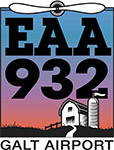How Should I Log my Flight Time as a Safety Pilot?
A safety pilot (SP) is a second flight crewmember required by 14 CFR §91.109(c)(1) only when the pilot flying (PF) is flying under simulated instrument conditions. Only the simulated instrument portion of the flight requires two pilots and is therefore the only period for which both pilots could potentially log PIC time. A safety pilot may log PIC time as long as they are acting as pilot-in-command for the simulated instrument portion of the flight. If they are not acting as pilot-in-command they must log their time as SIC.

